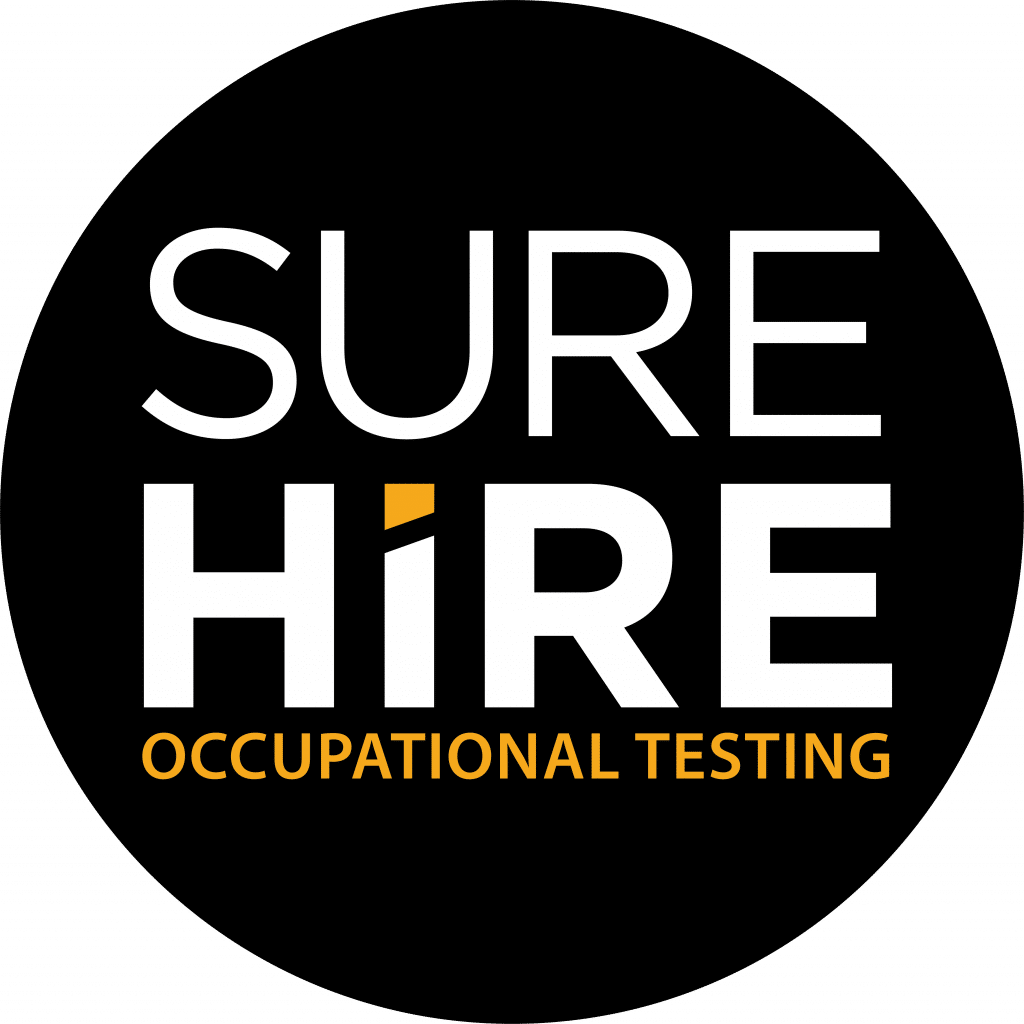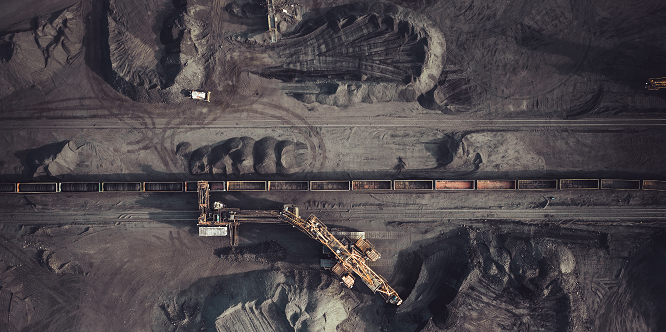TAKEAWAY: In this case study, we will explore how mining companies can use various types of occupational tests to reduce Total Recordable Incident Rates (TRIR) long term.
Jump Ahead
In any workplace, it is vital to ensure that employees are adequately suited for the tasks they are assigned. For many industries, this includes assessing an individual’s fitness for duty and capabilities through occupational testing. In a mining setting, individuals often work in very remote areas where medical care, such as hospitals, can be very far away. Companies need to do more robust medical assessments to ensure there are no health concerns.
These positions are also usually exposed to substances like coal dust, in which case a lung health program should include a health questionnaire, mask-fit, spirometry and chest x-rays. Very loud environments mean audiometric testing may be required.
What is the Total Recordable Incident Rate (TRIR)?
TRIR measures the number of work-related injuries and illnesses per 100 full-time workers within a given time frame. Companies use it as a metric to assess overall safety. It is often calculated using the following formula: #injuries x 200,000 divided by #hours worked. The number 200,000 is used because that is how many hours 100 workers working 40-hour work weeks would total annually. This number of 200,000 can be adjusted to provide quarterly TRIR rates.
Occupational Testing and Mining
Mining companies in North America have a unique set of occupational health and safety challenges. The mining industry is known for being one of the most hazardous industries in terms of worker safety, with risks including falls, explosions, and exposure to harmful substances. As a result, mining companies must have a comprehensive approach to ensuring the safety of their workers. A critical aspect of this approach is the use of various types of occupational testing to assess job applicants.
Occupational testing can take many forms, including physical fitness tests, cognitive ability tests, drug and alcohol screening, and psychological assessments. Employers can use these tests to assess an applicant’s ability to perform the job safely, their level of fitness, and their risk of injury or illness. By using these tests to screen job applicants, mining companies can reduce the likelihood of workplace accidents and injuries.

Looking for Occupational Testing Services?
SureHire offers a wide range of pre-employment screening and testing, including drug and alcohol testing, fitness-to-work testing, background checks and behavioural assessments.
Drug and Alcohol Testing in Mining
There is a direct correlation between impairment and worker safety, with several studies, including one by the International Federation of Labor, clearly linking substance abuse and occupational injury. Drug and alcohol testing can help reduce TRIR by reducing substance use and impairment on the job. The findings of one recent study on miners, for example, showed that the introduction of random drug and alcohol tests, as well as fit-for-work testing, resulted in fewer positive tests. The researchers concluded that a comprehensive alcohol and drug testing policy had a positive impact on reducing substance abuse in the workplace and that workers were restricting their drug use specifically because of the testing.
Lung Function Testing
Pre-employment lung function testing of miners can have a significant impact on TRIR. By identifying and screening out miners with pre-existing lung conditions, such as pneumoconiosis or silicosis, pre-employment lung function testing can help prevent work-related respiratory diseases and reduce the overall TRIR. This not only helps to protect the health and safety of miners, but it can also lead to improved productivity and reduced healthcare costs for employers. Furthermore, regular lung function testing can help monitor miners’ health and identify potential problems early on, which can help prevent severe or life-threatening conditions from developing.
Mask-fit and spirometry are two additional vital measures that can help reduce TRIR. Mask-fit testing is essential to ensure that respiratory masks provide adequate protection to workers by creating a tight seal around the face, preventing harmful particles and gases from entering the lungs. On the other hand, spirometry is a vital tool for monitoring lung function and identifying potential respiratory hazards. By implementing these measures, mining companies can effectively reduce the risk of respiratory-related accidents and injuries in the workplace, thus improving the overall safety of workers.
Fitness-to-Work Testing
Fitness-to-Work testing, or Fitness for duty testing, is a process used by mining companies in North America to assess the physical and mental capabilities of their employees or job applicants. Employers will conduct this type of testing to ensure their employees are fit to work in the mining industry, which is often characterized by demanding physical labour, extreme weather conditions, and a high level of risk.
The Fitness-to-Work testing process usually involves a series of tests and assessments designed to evaluate the applicant’s physical and mental health, physical fitness assessments, and psychological evaluations. The tests are designed to identify potential issues that could affect the employee’s ability to perform their job safely and effectively.
According to a study conducted by the National Institute for Occupational Safety and Health (NIOSH), mining companies that use fitness for duty testing have a lower TRIR than those that do not. The study found that companies that implemented fitness for duty testing had a TRIR of 1.8, while companies that did not have a TRIR of 3.5.
The study also found that companies that used fitness-to-Work testing had a lower incidence rate of musculoskeletal disorders (MSDs) than those that did not. MSDs are one of the most common types of injuries in the mining industry, and they can result from overexertion, repetitive motion, and awkward postures.
In addition to reducing the TRIR and the incidence of MSDs, fitness for duty testing has other benefits for mining companies. For example, it can help companies identify employees at risk of developing health problems or injuries and provide them with early intervention and treatment. It can also help companies identify employees needing additional training or support to perform their job safely and effectively.
Audiometric Testing
Many mining companies in North America use audiometric testing as part of their job assessment process for new applicants. In fact, annual hearing tests are required under the U.S. Occupational Safety and Health Administration (OSHA) and Mine Safety and Health Administration (MSHA) regulations as part of any hearing conservation program. In Canada, this legislation is dictated mainly by provincial health and safety statutes. However, the federal government governs specific cases involving federal employees or mining uranium or thorium.
Mines are noisy environments, and early diagnosis of conditions such as noise-induced hearing loss (NIHL) is crucial in mitigation efforts.
Audiometric testing is a hearing test that measures a person’s ability to hear sounds of different frequencies and volumes. By using audiometric testing, mining companies can determine if an applicant has hearing loss or other hearing-related issues that may affect their ability to perform their job safely and effectively.
The use of audiometric testing in job assessments can have a positive impact on TRIR. It can also effectively identify workers at risk of hearing loss due to their job duties. By identifying these workers early on, mining companies can take steps to prevent hearing loss and other related injuries from occurring.
Occupational testing can be a powerful tool for mining companies looking to improve worker safety and reduce their TRIR. By using a combination of pre-employment and ongoing testing, mining companies can ensure that their workers are fit for the job and can perform their duties safely. Additionally, by identifying workers at risk of injury or illness, mining companies can take proactive measures to prevent accidents before they occur.

Looking for Occupational Testing Services?
SureHire offers a wide range of pre-employment screening and testing, including drug and alcohol testing, fitness-to-work testing, background checks and behavioural assessments.
You May Also Be Interested In…
- Do You Have Reasonable Suspicion?
 Employers cannot initiate reasonable suspicion testing without first going through the 5-step process. Reasonable suspicion training provides critical information about how to initiate reasonable suspicion testing, including the 5-step process and other tools that employers can use to help manage the misuse of alcohol and drugs in the workplace.
Employers cannot initiate reasonable suspicion testing without first going through the 5-step process. Reasonable suspicion training provides critical information about how to initiate reasonable suspicion testing, including the 5-step process and other tools that employers can use to help manage the misuse of alcohol and drugs in the workplace. - An Employer’s Guide: What You and Your Employees Need to Know About DOT Drug & Alcohol Testing
 When implementing or maintaining DOT Drug & Alcohol testing, there are key areas that employers should consider.
When implementing or maintaining DOT Drug & Alcohol testing, there are key areas that employers should consider. - SureHire Occupational Testing Acquires COHR Health: A Positive Step Towards Safe, Healthy, Productive Workforces and Communities
 We are thrilled to announce that today, May 6, 2024, SureHire Occupational Testing has officially acquired COHR Health, a well-known leader in occupational health services. Read on…
We are thrilled to announce that today, May 6, 2024, SureHire Occupational Testing has officially acquired COHR Health, a well-known leader in occupational health services. Read on… - Occupational Testing Use Case – Mining
 In this case study, we will explore how mining companies can use various types of occupational tests to reduce Total Recordable Incident Rates (TRIR) long term.
In this case study, we will explore how mining companies can use various types of occupational tests to reduce Total Recordable Incident Rates (TRIR) long term. - 9 Strategies to Keep Workers Cool on Drilling Sites During Hot Summer Months
 This article delves into strategies to keep workers cool and safe on drilling sites during the hot summer months.
This article delves into strategies to keep workers cool and safe on drilling sites during the hot summer months. - Hearing Conservation Basics: How to Manage Occupational Noise
 Learn how to proactively mitigate occupational noise risks and help prevent NIHL among workers.
Learn how to proactively mitigate occupational noise risks and help prevent NIHL among workers.

